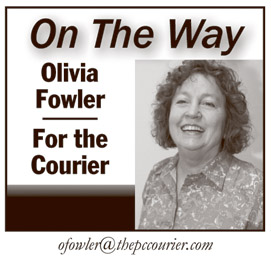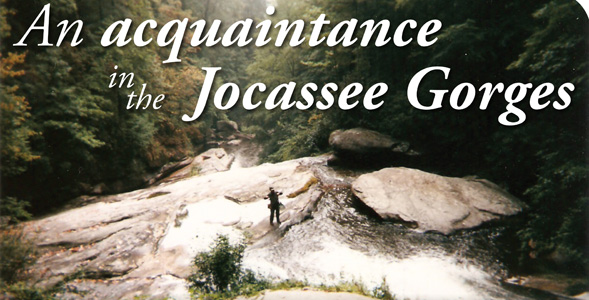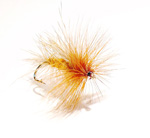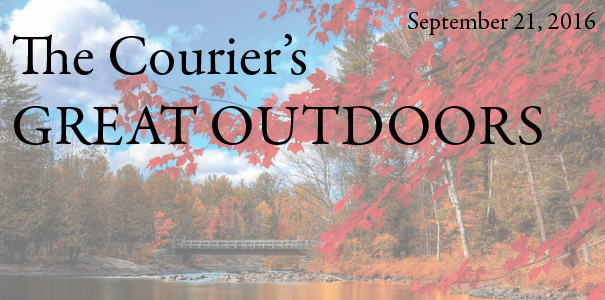Daily Archives: 09/20/2016
By the light of the moon
We toured Lake Jocassee Thursday evening with Kay Wade, a master naturalist who conducts tours of the lake on a pontoon boat. When we began, it was still a little warm and the sun was beginning to set in the west over the mountain peaks.
Then, as dusk fell, we saw the moon rise on the other side. It was the harvest moon, round and golden, the last full moon before the first day of fall, and it was beautiful.
[cointent_lockedcontent]
It lit a pathway below across the water, and instead of seeing the man in the moon, we saw what appeared to be the woman in the moon, which made sense as it was the harvest moon, and a time of fertility and fruitfulness.
As darkness fell on the lake, there was something mystical about it. There’s this great bowl of water surrounded by mountain peaks with steep rock walls reaching far into the sky. In places, there are large trees which appear to be growing right out of the rock face.
 It’s a unique part of the world.
It’s a unique part of the world.
The Jocassee Gorge is home to the most diverse collection of flora and fauna in the world, with the exception of Japan.
It is a national treasure, and by some fluke of luck it has not been raped and pillage but allowed, in part, to continue. The falls were there long before any of us breathed the air, and they will be there long after we are all gone.
Far beneath the water are petroglyphs from ancient peoples etched upon the rock. No one knows what the petroglyphs say. Are they directions to sacred places? Or messages from one tribe to another? And then, from a more recent time, there are the remnants of farms, pastures, houses and barns.
We live in a place of unrivaled geographic beauty. It is nothing short of a miracle that it still exists in a fairly pristine condition.
This entire area was once a valley between the mountains and was home to many families who had lived in the area for generations.
But when the decision was made to dam the rivers and create a source of electrical power under the domain of Duke Energy, families left their homes, cemeteries were relocated and what once was vanished forever except in the memories of their descendants.
Our tour guide was knowledgeable about all aspects of the lake. Especially interesting to me was the earthquake fault that runs underneath the lake. I’ve heard about it for years, but to actually get to see it amazed me.
It can be clearly seen on the rock face on the edge of the lake. The fault line descends at an angle, then there’s a shift and it continues a foot or so in distance away and goes down into the water. The rock is layered vertically, not horizontally, and the striations which tell geologists details of its formation are just interesting patterns to my unschooled eye.
I don’t know why the lake was formed over an earthquake fault. Nor why the nuclear reactors are where they are. Perhaps there was incomplete knowledge at the time of construction, or perhaps the decision-makers were gambling, hoping for the best-case scenario. It really doesn’t matter now, because it is part of our reality.
For today, I am thankful that it was my privilege to float across the surface of this beautiful awe-inspiring body of water, no matter how it was created. To see the darkness creep across the water until the surrounding mountains were absorbed by it was a once-in-a-lifetime experience. The stillness, the solitude and the earth itself was a great gift.
And that was Lake Jocassee by the light of the harvest moon.
[/cointent_lockedcontent]
Appropriate communication
Bonnie,
My husband always “wants to go home.” He has been living in our home that we’ve shared and owned for 30 years. However, night after night he tries to pack his bag to go “home.” I try patiently to explain that we are home. It doesn’t help. He just becomes agitated.
Answer: For so many people with Alzheimer’s disease, “going home” means “feeling normal.” It is a place where they can feel comfort and security. Their world is confusing and frustrating. They just want to simplify their life and feel safe and loved.
As caregivers we are tempted to explain that their parents are deceased and home is here. That makes us feel better, but doesn’t help your loved one at all. It will only sadden your husband to hear the facts, over and over. Instead, answer the question with compassion. Get into his world (trend of thought) and then “redirect” his thoughts and energy. For instance, you might take him for a ride to go get ice cream; you might take him for a walk outside, looking at the beautiful flowers in your garden; or you might say, “We will go, but first let’s fold laundry.” Any wholesome activity will do. It will redirect him in a soothing, compassionate manner.
 Bonnie,
Bonnie,
My mama wants to set the table each night for all of her five children and her husband, and she wants to cook dinner for them as well. She still seems to think her children are young and will be coming home from school, and that her husband will be coming home from work. In fact her other children are all married with their own families and her husband is deceased. Setting the table and cooking a lot of food is just a waste. How can I make her realize the truth?
Answer: Our objective for people with Alzheimer’s is to be positive and loving so they experience happiness. Although her wanting to set the table for a large group of people is frustrating and possibly irritating to you, it is not a harmful or unsafe activity for her. In fact, setting the table is a meaningful activity to her. You might consider letting her set the table for as many as she’d like. On the other hand, if your mama is doing something that is dangerous or unhealthy, you might want to step in and redirect. Cooking dinner might be dangerous for her, for others and for your home. Fires could be sparked — people could get hurt or burned. You might consider telling her that you’ll cook for the two of you. As others come home you’ll cook food for them so that their food will be nice and warm. When the two of you have finished dinner, your mama might unset the table and save the settings for another day. Finding ways your mama can feel helpful around the kitchen should be encouraged. She could mix ingredients, or wash the dishes, or put clean dishes away with your supervision and help. These activities would help her feel worthy and useful.
Email your questions concerning dementia to Bonnie at askbonnie@outlook.com. Questions are answered by Bonnie and her advisory committee from the local community.
Bonnie Holmes is president of Loving Health Care, Inc. Although the well qualified caregivers care for clients with many different types of needs, the specialty of this company is clients with dementia. For more information, call (864) 916-9204.
Courier Letters to the Editor 9-21-2016
The Pickens County Courier gladly accepts letters to the editor. Letters must be no longer than 500 words. All letters must be signed, including first and last name, address and phone number in order to be considered for publication. Only the name and city where you reside will be printed. Submission does not guarantee publication. we reserve the right to edit for content and length. No slanderous or obscene material will be accepted. Letters to the Editor and columns do not necessarily reflect the Courier’s opinion.
Courier Obituaries 9-21-2016
The Pickens County Courier runs In-County Obituaries free of charge. Please ask your funeral home about this service.
The signs of autumn are all around
By Dennis Chastain
Special to The Courier
news@thepccourier.com
I am going to confess right up front that I absolutely love the fall of the year. The only way I can make it through the long hot summer is the promise that eventually the air will cool, the leaves will start showing some signs of color, apples and scuppernongs will show up for sale at the Pickens Flea Market, and men in camouflage will be seen leaning on the hood of a truck planning out their deer or bear season.
My calendar says that Sept. 22 is the autumnal equinox, the official changing of the seasons, but I don’t trust my calendar anymore. The seasons are so screwed up these days that I don’t believe that we have actually turned the corner until I start seeing the signs of nature pointing in that direction.
 Just in the last two weeks I have seen the first monarch butterflies. The cloudless sulphur butterflies have been drifting through this area for a month. The poplars, black gums and sourwoods are all showing their initial blushes of red and gold. And the squirrels are starting to cut pine cones for their tiny but tasty seeds. These are all perennial, never fail, signs of good things to come.
Just in the last two weeks I have seen the first monarch butterflies. The cloudless sulphur butterflies have been drifting through this area for a month. The poplars, black gums and sourwoods are all showing their initial blushes of red and gold. And the squirrels are starting to cut pine cones for their tiny but tasty seeds. These are all perennial, never fail, signs of good things to come.
To the hunter, the beginning of autumn is the most exciting time of the year. The bucks are out there rubbing the soft velvet from their antlers and will soon be getting rutty. White oak acorns are starting to drop, and bears and wild hogs are scarfing them up like a vacuum cleaner gone wild. Doves can be seen descending on grain fields in great numbers. The prospect and promise of the upcoming hunting seasons, each in its own time, is just around the corner. Now is the time to plan and prepare and to dream big. All things are possible in September.
Fishermen know that the cooler overnight temps help bring lunker largemouths, schools of eager crappies and the Lake Jocassee trout up from the depths. It will not be long before the hoards of jet skis and party boats will wane and the bass boats with rod tips waving in the breeze will once again reign supreme on the upcountry’s lakes and reservoirs.
But it is not only hunters and fishermen who celebrate the changing of the season. Hikers know that the lower humidity and cooler autumnal temperatures put a spring in your step. You can now go farther and faster without ending up exhausted, soaked in sweat, and dreading the walk back to the car. Mosquitoes and no-see-ums become less of a problem, and it actually makes sense to have a warming campfire at night.
Check out an article I wrote on the benefits of walking in the woods in the January/February 2016 issue of South Carolina Wildlife magazine. This link should get you there: http://www.scwildlife.com/articles/janfeb2016/walk.html. Or you can simply Google “Dennis Chastain SC Wildlife walking in the woods.”
Cyclists know that they can also extend their range for the next several months. It now seems perfectly reasonable to ride 40 or 50 miles in a day. And the scenery along the way changes on an almost daily basis.
Wildflower enthusiasts are chomping at the bit to get out there and enjoy their fall favorites blooming in their full glory. Asters and Black-eyed Susans will soon dominate the landscape. The Virgin’s bower, Joe-Pye weed, Crown beard, New York ironweed and a number of richly hued morning glories are already flowering all over the place.
Birders are watching for the first signs of the songbirds and other wild fowl gathering up in flocks as they prepare for their annual migrations. Armed with high-powered binoculars and long-range camera lenses, a growing number of “hawk watchers” are anxiously awaiting the impressive kettles of hawks and other raptors that put on quite a show as they drift past the highest peaks of our southern mountains. I predict that Sassafras will soon surpass Caesar’s Head as a popular place to observe this annual avian wonder of nature. Get ready. It’s coming.
And even if you don’t fit into any of the above categories of outdoor enthusiasts, there is something in the great outdoors for you. Trust me — for a number of reasons, it is to your advantage to find a way to get out of the house and enjoy the timeless beauty, the awe-inspiring grandeur, and the peace and tranquility of the natural world.
The city of Pickens is evolving into more and more of an outdoor-oriented town. A few blocks from Main Street you can stroll along the very pleasant hiking trails at Jaycee Park. Or you can dust off that old balloon-tired bicycle in the garage and take a ride along the increasingly popular Doodle Trail. Or you could just amble down some of the oak-shrouded streets in the older neighborhoods of our historic village, and maybe stop to talk with someone you have not seen in a long while.
Still not convinced to get off the sofa and get out into the great outdoors? Stop by our new local outdoors outfitter store on West Main Street to scan the shelves and talk to the good folks inside. Who knows, you might find that there is some kind of new outdoor adventure in your future; maybe something like kayaking, paddle boarding, bird watching, jogging or hiking and camping. Above and beyond everything else, take a few minutes, or an hour or two, to celebrate the changing of the seasons. The transition from summer to fall only comes once a year.
Dennis Chastain is an award-winning outdoor writer,
interpretive naturalist and modern-day explorer.
He has been writing feature articles for South Carolina
Wildlife magazine and other outdoor publications for more than 20 years.
An unexpected companion makes a lifelong memory

By Dr. Thomas Cloer Jr.
Special to The Courier
news@thepccourier.com
I absolutely love our Jocassee Gorges, a national treasure of our Southern Appalachian Mountains. My roots run deep in the gorges. My grandchildren represent the ninth generation of my family to love, adore and treasure the majesty and allure of such a jewel in our Upstate. My great-great-great-great maternal grandfather, Daniel Moody, came to the old Pickens District late in the 1700s and bought land on the Keowee and Toxaway portions of upper South Carolina.
One of my favorite places, as I grow longer in the tooth, and need a place a little more placid, is the beautiful and scenic Laurel Fork Heritage Preserve of the Jocassee Gorges. I have camped, hunted and fished there, in what is now the preserve, with many different people. One was a man who now has monuments erected for him in the gorges. Franklin Gravely, the legendary mountain man and game warden for whom the Franklin Gravely Wildlife Management Area in the Jocassee Gorges is named, was a frequent companion for decades. Franklin, his son, Mike Gravely, my dad, my son, Tom III, and I coon hunted the Jocassee Gorges for years.
A Surprise on Laurel Fork
Presently, one of my favorite trips to Laurel Fork Creek is to travel up U.S. Highway 178 to the point at which the Horsepasture Road or the access road to the Foothills Trail junctions with 178 north of Pickens. The Horsepasture Road continues west into the gorges until it reaches the Laurel Fork Gap at the very head of the Laurel Fork Heritage Preserve. By parking here in the gap, one can access the old Laurel Fork Road that runs along Laurel Fork Creek all the way down the preserved valley to Lake Jocassee. It takes me about 20 minutes on the Horsepasture Road before reaching the gap and the preserve. I then walk down the old Laurel Fork Road that I coon hunted for so many years.
I leave a pack with snacks and a drink at one of the creek crossings, and often travel far on down the valley to begin fly fishing back upstream. I catch all three species of trout — rainbow, brook and brown trout. The South Carolina Department of Natural Resources has done a wonderful job of preserving this pristine paradise. I frequently visit without ever encountering another human. I love the solitary trips in this Garden of Eden with nothing but black bears, wild boars, turkeys and beautiful trout. I was enjoying just such a treat when a large animal jumped into Laurel Fork Creek so close to me that water splashed on my surprised face! It was one of the largest black and tan coon hounds I had ever seen; the dog was really huge!
I tried to decide what sex the big, beautiful animal was. What I saw utterly surprised me. It was a male black and tan male hunting dog that had been “fixed.” Now, how many hunters do you know in the Jocassee Gorges who “fix” their hunting dogs? “None,” you say, and you are absolutely correct. Not going to happen! In the first place, hunters want to continue the blood line of good hunting dogs. Secondly, most hunters want their hunting dogs to be more eager, not less. I have been associated with coon hounds throughout my life. I am now in my 70s. I have never known hunters who neutered their dogs.
Getting Acquainted
The huge animal was a beautiful specimen. I immediately started talking to him, and he began wagging his tail and looking me in the eye. This dog was very different.
“Hey Boy!” I said. “I bet you are a lost hunting dog. The bear hunt with dogs just concluded here in the gorges. Laurel Fork Heritage Preserve is a hot spot for black bears! But that muffler repair of yours has me totally confused!”
As I talked to the big dog, I noticed he had no collar and no identification. Hunting dogs sometimes lose their collars after sticking their heads in holes when pursuing their quarry. When he made eye contact with me, I could tell his eyes were bloodshot; he had been lost for a while, and had lost much sleep. Instead of running up the creek, he walked slowly right beside and occasionally in front of me.
I said to the big dog, “Now listen, Scooby Doo! I walked in here to this heritage preserve to catch trout. I can’t catch trout if you walk in front of me and scare them. If you are going to walk with me, get here behind me where you won’t scare the trout.”
He turned his head sideways as he listened to me. Then, to my utter amazement, he walked timidly back behind me and looked up as to say, “Is this O.K? I don’t want to mess this up!”
The big beautiful black and tan then followed obediently behind me until I had my limit of trout. When I would look around and say, “You’re doing just fine, fellow,” he would look up at me with his big bloodshot eyes as if to say, “I just can’t mess this up!”
“I bet you will chomp down on some trout heads when I clean these fish,” I said.
However, the big beautiful hound wasn’t a bit interested in fish heads. Instead, he made him a bed near me in some lush creek moss and began immediately snoring so loudly that I could hear it clearly over the rustling mountain stream.
 I finished cleaning my trout and packed them in wet rhododendron leaves within my creel. The big hound continued to snore even more loudly.
I finished cleaning my trout and packed them in wet rhododendron leaves within my creel. The big hound continued to snore even more loudly.
Courtesy Dr. Thomas Cloer Jr.
The author’s grandson, Dylan Cloer, with Baxter.
“If you are going with me, Scooby, you better get up from there, because I am traveling upstream toward my pack.”He opened those big bloodshot eyes, arose shakily on his tired feet and started up the trail with me. After reaching my pack, I said, “I have real food in here. If you will sit, I will give you some of it.”
Again, beyond all my expectations, he sat, turned his big head sideways and started to wag his tail. I knew there was something very special about the obedience and friendliness of this big dog. I opened the box of oats and honey granola bars, and I had one, and he had the rest of the box. The big boy must have been lost for some time. It took no effort for him to down those granola bars.
A Diversion
As I put on my pack and started up toward the gap and my truck, the big hound was walking right with me until I noticed where a black bear had just come across the old road. Immediately, the hair on his back stood straight, and he dashed off in the laurels bawling like a true black and tan.
“Well, I guess that’s the last I will hear of him,” I said aloud as I walked on up the trail. “What a strange encounter that was!”
I went on toward the gap and my truck. As I came close to my vehicle, I heard something like a horse running behind me. Sure enough, when the huge hound reached me, I petted him and he wagged his tail enthusiastically, but still courteously.
As I put my creel, fly rod and pack in the truck, the big hound climbed up on a high rock where I had parked. He then sailed through the air like a giant pterodactyl and landed in the bed of my truck. My little Ford Ranger truck shook when he loaded.
“I guess that settles it! You are definitely going home with me!” I said as I cranked my truck and headed back the old Horsepasture Road I had traveled so many times with Franklin Gravely and Dad, looking for our lost coon dogs.
Meeting My Wife
My wife, Elaine, loves animals to a fault. When I arrived at our home, the big hound sailed out of the truck before I even let down the tailgate. He ran to our door and sat wagging his tail and waiting for me to come and open it for him to enter.
“You beat all I’ve ever seen! You’re definitely no ordinary hunting dog,” I said as I opened the door for him to enter.
“Who is this? Oh! What a beautiful animal! Where on earth did you find him?” my wife asked as she petted and rubbed the big hound’s head. He soaked up all the petting and became even more active when she said, “I bet you are hungry. We have some dog food left over from keeping our son’s dog,” she exclaimed as she found the food and poured it into a little pail.
Gulp! Gulp! All gone!
“Oh mercy! I don’t know if we can afford him. I’ve never seen a dog eat like that!’ my wife laughed.
“I named him Scooby Doo because of his size. He’s been lost in the Jocassee Gorges, and has burned a lot of calories!” I declared. “We’ll have to find his owner.”
My wife put his food and water by a woven rug near our wood stove. The big socialite, however, seemed to want to be with us in our bedroom, not in another room. I awakened during the night and strolled to the bathroom. When I returned, there lay Scooby cuddled up to my wife.
“No sir! That’s my spot!” I told him.
He stepped off the bed before I moved my foot, and all his weight landed solidly on the top of my foot. I thought surely he had broken it.
Finding His Owner
“We’ll start by putting up posters about finding a large lost hound. I’ll make the posters on the computer and print them,” I told my wife. “Then, we’ll put them on Highway 178 where the Horsepasture Road joins Highway 178. We will also put them up toward Rosman in different store windows.”
The next week, I received a response. It was actually a neighbor.
“Tom, I saw your poster on the Horsepasture Road. Was that big dog fixed?”
“He was fixed,” I said, “and had no collar.”
My neighbor said, “He came to my camp when I was deer hunting, and he had a collar then. I looked on the collar, got a phone number, and wrote it down. He belongs to someone with a Brevard, North Carolina, address. Got a pencil?”
I got the number and called. A very nice lady in Brevard answered and exclaimed with delight!
“You have found Baxter! We’ve been worried sick about him! My husband will come tomorrow and get Baxter, and leave you a check.”
“Oh no! I should pay you!” I said. “That big dog has been the delight of my grandchildren ever since he arrived. He plays with children like he was another child.”
Conclusion
When Baxter’s owner, Mr. Paul Hawkins, came up my driveway, he stopped, climbed out, and called, “Hey Baxter! Where have you been fellow?”
Baxter was whining uncontrollably as he ran to Mr. Hawkins, stood on his hind legs and hugged his owner like a person. One could tell in a moment there was real chemistry between the two. They truly adored each other.
I first asked Mr. Hawkins exactly where he lived, and how Baxter got to me in the Laurel Fork Heritage Preserve of the Jocassee Gorges. Here is the scoop.
Paul and his wife, Pauline, are two lovers of art and entrepreneurs, originally from Chicago and Columbus, Ohio, respectively. I am very familiar with their two businesses. One at 36 S. Broad St. in Brevard is called Local Color. What a fantastic and clever idea this shop was! More than 150 local mountain artists and consignors bring their finest arts and crafts. There are also accessories and apparel galore. The two also own Coffee cArts Studio on the Rosman Highway, just outside Brevard. I stop there and eat the best of baked goods served with the finest coffees.
Paul and Pauline actually live off the Old Toxaway Road that reaches all the way down close to where the Fisher family tragedy occurred in the Jocassee Gorges in 1936. This is where Ben Fisher and his sons, Raymond, Odell and Otis, all drowned in the Toxaway River. Their bodies were brought up the Old Toxaway Road to a funeral home in Brevard.
I asked Paul and Pauline how two entrepreneurs and lovers of art would live at the very head of the Jocassee Gorges with a “fixed” black and tan hound. They thought Baxter might be mixed with “some kind of bird dog.” They further explained they thought neutering would have a friendly, devoted bird dog hanging around close to their property. I said that I thought Baxter was undoubtedly black and tan, a breed of long-ranging hunting hounds, and that his instincts had inexorably led him deeply into the majestic Jocassee Gorges.
As Paul and Baxter were about to leave, Paul turned and said to me, “You know, Tom, other than running off and chasing things, Baxter really has only one fault. When we have overnight guests at our home, if one ever gets out of bed for any reason, Baxter will claim that spot immediately. Oh, I forgot to mention that we also have Baxter’s big brother, who is longer and taller than he is.”
“You’re kidding! What’s his name?” I asked as Paul got into his car to leave.
“Gunther,” Paul said, as he looked back. “His name is Gunther.”
Epilogue
As this paper goes to press, we have some very sad news to pass along. Baxter, having lived the good life of a black and tan hound, and with the author, having enjoyed the beauty, grandeur and sheer wonder of the Jocassee Gorges of upper Pickens County, passed away peacefully in his sleep on a recent cool September night. Paul and Pauline Hawkins have our deepest sympathy for having lost one of the most amazing animals I have experienced in my lifetime.
About the Author: Dr. Cloer a is professor emeritus at Furman University. He and his ancestors have lived, worked, hunted, fished and loved the Jocassee Gorges since the early 1800s.
Jocassee Gorges a prime destination for trout enthusiasts
The state’s prized 50 square miles of mountain habitat known as the Jocassee Gorges contains some of the highest quality water resources anywhere. Yet things are getting even better, according to the wildlife biologist and forester who manages the Jocassee project in northern Pickens and Oconee counties.
“We have some excellent trout fishing opportunities in the Jocassee Gorges,” said Mark Hall of the S.C. Department of Natural Resources (DNR), an avid fly fisherman who relishes opportunities to enhance water quality, trout streams and the quarry he likes to find at the end of his fly line — the brook, brown or rainbow trout.
[cointent_lockedcontent]
The Eastatoee River and its headwaters support an incredible diversity of aquatic life in terms of invertebrates, salamanders, snakes, frogs and trout, according to Hall.
“Just turn over any rock in the stream and you’ll find stoneflies, caddisflies, mayflies and their allies,” Hall said.
Popular Jocassee trout streams include the Eastatoee, Whitewater, and Thompson rivers, Howard, Limberpole, Wright, Reedy Cove , Laurel Fork, Cane, Abner, Rocky Bottom, Willis and Emory creeks. Some larger Jocassee streams support both stocked and wild rainbow and brown trout. The best larger wild trout streams in the Jocassee Gorges include: Howard Creek, Eastatoee Creek (from the heritage preserve upstream), Whitewater, and Thompson rivers. Portions of all of these streams boast populations of self-sustaining wild trout. In general, the streams that can be easily accessed by vehicle support plenty of stocked trout during the spring and summer months.

OLYMPUS DIGITAL CAMERA
Special to The Courier
Jocassee Gorges offers excellent trout fishing opportunities.
The DNR Freshwater Fisheries Section also manages sections of most of the aforementioned streams as hatchery-supported trout streams during the cooler seasons of the year. Some streams receive weekly stockings of catchable sized trout during late-winter, spring and early summer months, and bi-monthly stockings during the fall, according to Dan Rankin, DNR regional fisheries coordinator and trout biologist.
“The DNR stocks more than 80,000 catchable-size trout in the Jocassee Gorges area each year,” Rankin said. Backcountry streams that do not currently support viable wild trout populations, such as Laurel Fork and Cane creeks, are also stocked seasonally with trout to provide good backcountry fishing opportunities. In addition, two new “delayed harvest” stream segments were recently added on lower Eastatoee River and Howard Creek. These delayed harvest areas are stocked heavily by DNR and managed as catch-and-release during the cooler months, which optimizes the chances that trout anglers will have a great fishing experience.
 Access weekly trout stocking updates by visiting the DNR stocking report. The DNR’s Trout Fishing Guide also provides valuable information on access and management of Jocassee area trout streams. Hard copy can be obtained by calling (864) 654-6346, extension 24.
Access weekly trout stocking updates by visiting the DNR stocking report. The DNR’s Trout Fishing Guide also provides valuable information on access and management of Jocassee area trout streams. Hard copy can be obtained by calling (864) 654-6346, extension 24.
Some creeks that require long hikes and foot trail access do support wild, reproducing populations of trout. Examples of good “blue line” wild trout fishing streams include Limberpole, Wright, Emory, and upper Howard creeks.
However, a recent study by DNR Freshwater Fisheries Section staff revealed that numerous high-elevation, headwater Jocassee streams are devoid of trout. The study identified limited pool habitat and cover for trout as the primary deficiency in these streams. DNR staff are already working to restore these headwater habitats in two streams on Jocassee with a goal of introducing native brook trout to these fishless stream reaches in coming months. DNR staff recently felled and downed numerous trees in upper Laurel Fork and Emory creeks.
Studies have found that large trees in such streams facilitated the transport of sediments downstream, and provided crucial cover for trout and the food they require.
Editor’s note: This article came from the archives of the South Carolina Department of Natural Resources, and some information may have changed since its original publication in 2013. Visit dnr.sc.gov for more information.
[/cointent_lockedcontent]
Importing deer, elk parts limited by SC regulations
With big game seasons opening in many Western states, hunters traveling abroad are reminded not to import into South Carolina certain carcass parts from deer and elk harvested in states with chronic wasting disease.
To protect the state’s extremely valuable white-tailed deer resource, the S.C. Department of Natural Resources (DNR) has maintained a regulation restricting the importation of certain carcass parts from deer and elk harvested in states with diagnosed cases of chronic wasting disease (CWD), according to Charles Ruth, DNR Deer and Wild Turkey Program coordinator in Columbia.
“Currently, deer hunting generates more than $200 million annually for South Carolina’s economy,” he said, “and deer are the most-sought game species in the state, in addition to being the official state game animal.”
This measure was taken so resident hunters who travel to other states to hunt will not bring potentially diseased carcass parts to South Carolina.
“The regulation will not keep hunters from importing harvested game since most game taken outside of South Carolina is processed in the state where it was harvested,” Ruth said.
Chronic wasting disease is one in the family of transmissible spongiform encephalopathies and is similar to mad cow disease, according to Ruth. The disease attacks the central nervous system of the deer or elk and presents symptoms including extreme weight loss, excessive salivation, odd behavior and poor coordination. The disease is infectious, communicable and always fatal to deer and elk, but perhaps the biggest stumbling blocks for wildlife professionals is that chronic wasting disease has a prolonged incubation period–up to five years–and no approved test exists to detect the disease in live animals. Diagnosis requires examination of the brain. Although wildlife health officials are conducting considerable research, the overall biological and epidemiological understanding of chronic wasting disease remains poor.
According to the state regulation, hunters traveling to states with confirmed cases of chronic wasting disease should only bring the following carcass parts into South Carolina: Quarters or other portions of meat with no part of the spinal column or head attached; meat that has been boned out; hides with no heads attached; clean (no meat or tissue attached) skulls or skull plates with antlers attached; antlers (detached from the skull plate); clean upper canine teeth, also called “buglers,” “whistlers” or “ivories;” and finished taxidermy heads.
Hunters should not import whole carcasses or parts of deer or elk that contain nervous tissue like the brain or spinal column. Hunters traveling elsewhere should check with the wildlife agency in their destination state to determine its CWD status and to determine what restrictions the state may have on the movement of carcasses. States where CWD has been diagnosed include Arkansas, Colorado, Illinois, Iowa, Kansas, Maryland, Michigan, Minnesota, Missouri, Montana, Nebraska, New Mexico, New York, North Dakota, Oklahoma, Ohio, Pennsylvania, South Dakota, Texas, Utah, Virginia, West Virginia, Wisconsin, Wyoming and the Canadian provinces of Alberta and Saskatchewan.
DNR is asking resident hunters who travel to other states to follow these restrictions when bringing certain carcass parts into South Carolina, Ruth said. Good evidence exists that the CWD agent can remain viable in the environment, in the soil for example. This has been demonstrated at research facilities where the disease was present in deer or elk. The diseased animals were removed, and the facilities underwent complete disinfecting and no animals were present for an extended period of time. Once animals were returned to the facility, they became infected with CWD.
“This is precisely the reason that DNR is asking hunters not to bring certain parts of carcasses to South Carolina when they hunt in states where CWD has been diagnosed,” Ruth said. “If hunters dispose of these carcass parts in South Carolina then the disease agent may infect deer in the local area.”
South Carolina’s DNR is following the lead of a number of states in letting hunters know how they can help fight the spread of CWD, according to Ruth.
For more information on chronic wasting disease, see the Chronic Wasting Disease Alliance website at: http://cwd-info.org/
Protect the Outdoors
Millions of people visit public parks across North America every year. Nature preserves and natural parks are home to picturesque landscapes, monuments, natural wonders, and abundant wildlife.
Visiting parks is a great way to enjoy the beauty of nature and learn something along the way, but such visits also come with a great degree of responsibility. Celebrating its 100th anniversary last month, the National Park Service joined with the British Columbia Ministry of Environment to provide these guidelines to remain good environmental stewards when visiting popular parks and preserves.

Know the laws
National parks may be protected by federal law that may prohibit or restrict hunting and trapping animals to specific times of year. Wildlife living in parks may become less fearsome of people over time, especially when they grow accustomed to being fed or handled. Many parks prohibit feeding and close interacting with wildlife. Otherwise the animals may lose their hunting or foraging ability, or pose threats to people when the animals rapidly approach for an easy handout. Learn park rules so you’ll know what is acceptable behavior within its borders.
Keep wild animals wild
Feeding animals is perhaps one of the more dangerous things park visitors can do. In recent years, the National Park Service has had to euthanize deer, coyotes, rock squirrels, and other animals that have become too aggressive toward humans because they grew accustomed to receiving food from people.
Keep your distance from wildlife. Use proper equipment to view or photograph animals from several feet away. Stay even further away from animals that are breeding, nesting or raising young, as parents can become particularly protective of their children and turn aggressive.
Keep a clean camp
Camping and parks often go hand-in-hand. Keep a clean camp so you are not attracting bears and other food scavengers. Use trash receptacles and store garbage and food out of reach. Cook and clean away from your tent and immediately clean any cooking supplies after you have finished your meal. Only wood and paper should be burned, and try not to prepare food or fishing bait in close proximity to your campsite.
Prepare for weather
Weather can change on a dime when you’re in the wilderness. Pack accordingly, dressing in layers so you can change clothes as the weather demands. Have a flashlight and other emergency supplies available in case you get stuck in a storm.
Higher elevations and exposure to the sunlight can cause severe sunburn. Always apply and reapply sunscreen. High elevations also can increase the chance of dehydration, mountain sickness (headaches, nausea and dizziness) and the aggravation of preexisting medical conditions.
Avoid damaging vegetation
Animals are not the only natural wonders to protect. Use caution when hiking so you do not trample vegetation. Keep pets on leashes so they do not disturb sensitive habitats. Do not pick flowers or berries and take them away from the park.
Respecting local wildlife and taking steps to keep parks clean can make your hiking and camping experiences that much more enjoyable.
Deer season has arrived

By John Garner
Special to The Courier
news@thepccourier.com
Finally! Nine months has passed us by and once again, deer season has arrived. The smells of fall, college football, the leaves on the trees changing colors from green to a beautiful orange and red are what outdoorsmen live for. Life doesn’t get any better than that!
Whitetail hunting is in your soul and is undeniable to thousands of hunters in this area. Of course, once again, and as usual, many outdoorsmen waited until the last minute to get ready and all of a sudden realize the season is here. I decided this year that I would write an article on how to scout for that very elusive whitetail without ruining your chances for that big buck.
Every year I have many sportsmen say the same things to me, and the one thing I hear the most is ” I never see any big bucks.” The reason a lot of hunters never see the big bucks is because they turned the big bucks nocturnal long before the season ever started when they were scouting. When you scout for deer, every precaution that you take while you are actually hunting should also be taken when you are scouting. Don’t wear any scent, cologne, or perfumes when you are scouting. Don’t touch anything you don’t need to touch, and try your very best not to spook anything. Also, do your scouting between noon and 2 p.m. when the deer are most likely bedded. The most important thing though is this — get ALL the information you need in one trip. Don’t go into your hunting area over and over again, as you are just educating the deer and turning any big buck you might have had nocturnal.

Special to The Courier
The reason many hunters never see the big bucks is because they turned the animals nocturnal before the season ever started when they were scouting, according to John Garner.
Since we are very close to the season, a good method I use once the season begins is to walk down a creek with a 5-gallon bucket long before daylight. Everywhere you think deer are crossing, scoop up a bucket of water and throw it onto the bank where the deer are crossing and let all the debris wash back into the creek. Keep walking as far as you can and repeat this process on every crossing you see. Once you have gone as far as possible (hopefully half a mile or so), then you might as well sit on your bucket and hunt. Around noon, get up and go back up the creek. Anywhere you see fresh tracks is probably a good morning stand and a good place to set up a stand to start hunting. This is one way you can scout without spooking the deer. It is also a good way to watch and observe whitetails so that you can put in more stands as the season progresses.
Finally, let me say that the biggest reason that a lot of hunters don’t see the big bucks is because they shoot the first thing they see. You will see bigger and better bucks only when you start letting the little ones walk. If you want better bucks, then raise your own standards, improve your skills and do your homework. Practice makes perfect. Deer season does not start in September for the true deer hunter. The true deer hunter starts getting ready for deer season Jan. 1, when the season ends. It is a 365-day-a-year job. If you want to be truly good at a sport you truly love, then dedicate yourself and you will have tremendous results.
John Garner is the owner of Garner’s Firearms and Archery at 701 W. Main St. in Easley. He can be reached at (864) 859-3500 or garnershuntin.com.


































